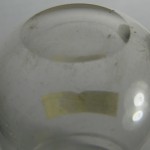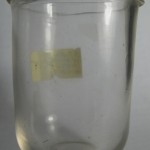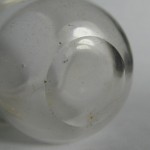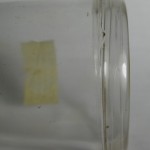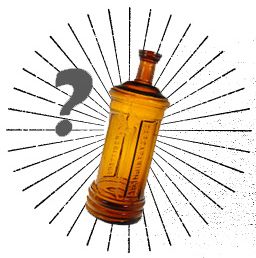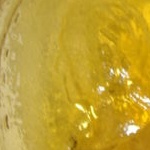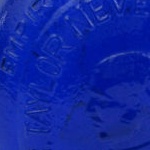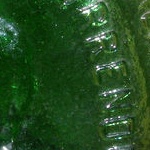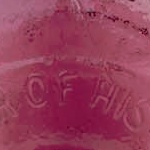Here are pictures of a clear glass leeching cup from the earlier part of the 19th century. It is 2-3/4″ tall and about 2″ in diameter. It’s a hand blown piece with folded rim and a polished pontil.
Daily Archives: December 22, 2011
Washington Taylor, Father of His Country flasks
The Washington Taylor flask described by McKearin as GI-37 is a fairly common item whether they be the original 19th century bottle or the abundantly reproduced 20th century copy. Determining whether one is a true historical flask or just a replica made by the Clevenger Brothers or other late 20th century manufacturer is not always an easy task for the non-collector.
The #37 quart mold is the first of 32 different variations thought to have been made at either Dyottsville Glass Works in Philadelphia, PA or Lockport Glass Works in Lockport, NY. Original bottles exist both as smooth base or with a pontil scar; lip finishes vary from the common shear to single or double collar and even in some cases a square or tapered collar.
Let’s compare:
(1) Some modern replicas are quite different, in shape, size and embossing. It’s the Clevenger Glass Works product which is fairly faithful from the original and causes the greatest confusion. The differences are subtle and in some cases only the experienced collector is going to be able to tell the difference.
(2) Originals were produced in a wide variety of colors, some of which are rarely seen in 19th century bottles. Modern pieces are found in both the common aqua color as well as brilliant green, yellow, puce and cobalt blue, among others. Colors other than aqua should be an immediate warning sign that the bottle is likely modern.
(3) Modern and old are found in smooth base or with pontil scars. Modern and old can have a plain sheared lip or some type of lip finish.
(4) Both modern and old can show similar thickness of glass; similar straw marks, bubbles and potstones. A common trait in modern examples is the bumpy, “orange peel” effect to the glass surface.
(5) The junction of the neck and body of the modern bottles is often abrupt. As you see in the photos below, the modern examples look like the neck was just jammed onto the bottle. In 19th century bottles, the transition is smooth without a seam or crease.
(6) The bases of 19th century examples are either flat or with a large oval recess. Modern examples have a precisely round concave recess in the bottom center. In some cases, the round recess is obscured by the pontil scar.
Value
Reproductions are abundant and do not have much value. Figure $5-20 decorative value. Originals without damage begin in the $75-100 range for aqua and can reach into the $20-30 thousand dollar range for a great example in a rare color. $2-6 thousand is more typical for a good quality colored example.
